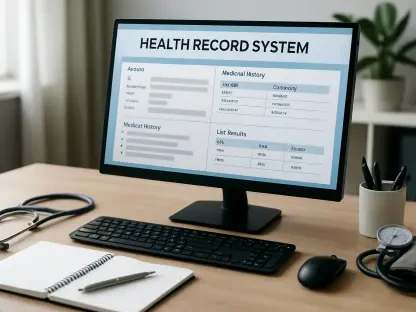Today, we have the pleasure of speaking with James Maitland, an expert in robotics and IoT applications in medicine. James has a robust understanding of how advancements in technology can drive significant improvements in healthcare solutions. We will explore the proposed amendments to the HIPAA Security Rule, their objectives, impacts, and the new requirements that healthcare entities need to be aware of.
Can you briefly explain the proposed amendments to the HIPAA Security Rule announced by the Office for Civil Rights?
The proposed amendments to the HIPAA Security Rule by the Office for Civil Rights aim to update and strengthen the regulations surrounding the confidentiality, integrity, and availability of electronic protected health information (ePHI). These changes are designed to address the escalating cybersecurity threats in the healthcare sector by updating definitions and requirements, with a significant emphasis on contemporary technological standards and enhanced security practices.
What are the main objectives of these proposed updates?
The primary objectives of these updates are to mitigate risks associated with cyberattacks, enhance the overall security posture of healthcare organizations, and ensure the protection of sensitive patient information. By doing so, the regulations seek to safeguard healthcare as a critical infrastructure component and uphold public trust in the healthcare system’s ability to maintain data security.
How will these amendments improve the confidentiality, integrity, and availability of ePHI?
The amendments introduce several robust security measures, including mandatory encryption of data at rest and in transit, implementation of multi-factor authentication, and frequent vulnerability assessments. These measures will ensure that ePHI is more secure against unauthorized access, data breaches, and other cyber threats, thereby maintaining its confidentiality, integrity, and availability.
Why do you believe these changes are necessary given the current cybersecurity threat landscape in healthcare?
Given the dramatic increase in cyberattacks targeting the healthcare sector, including significant breaches affecting millions of individuals, these changes are necessary to close existing security gaps. The evolution of cyber threats demands a corresponding evolution in cybersecurity practices and regulations to protect sensitive health data and maintain the integrity of healthcare services.
Can you explain the significance of eliminating the distinction between “required” and “addressable” implementation specifications?
Eliminating the distinction between “required” and “addressable” implementation specifications means that all specified security measures are now mandatory. This change promotes uniformity and clarity in compliance expectations, ensuring that all covered entities and business associates adhere to a consistent set of security standards.
How will the comprehensive documentation requirement affect covered entities and business associates?
The comprehensive documentation requirement will necessitate that covered entities and business associates maintain detailed records of their security policies, procedures, plans, and analyses. This will ensure thorough oversight and accountability in managing ePHI security and facilitate better compliance checks and audits.
What are the key updates to definitions and specifications mentioned in the proposed rule?
The proposed rule updates key definitions and specifications to align with modern terminology and technological advances. For example, it introduces updated terms that reflect current cybersecurity practices and technology, ensuring that the regulations remain relevant and applicable in today’s rapidly evolving digital landscape.
Why is the maintenance of a technology asset inventory and network mapping important?
Maintaining a technology asset inventory and network mapping is crucial because it provides a clear overview of all assets that handle ePHI and how data flows within the network. This visibility is essential for identifying vulnerabilities, conducting effective risk assessments, and implementing protective measures to secure these assets and data flows.
Can you detail the new requirements for periodic risk assessments?
The new requirements mandate periodic written risk assessments that include a comprehensive review of technology assets, threat identification, vulnerability assessments, and evaluations of risk levels. This ongoing process helps healthcare entities stay proactive in identifying and mitigating potential security threats.
How will the requirement for access management within 24 hours impact healthcare providers’ operations?
The requirement for access management within 24 hours ensures timely management of ePHI access changes, such as when an employee’s role changes or they leave the organization. This prompt action minimizes the risk of unauthorized access and enhances the overall security posture of healthcare providers.
What are the implications of the proposed incident response and contingency planning requirements for healthcare organizations?
The proposed incident response and contingency planning requirements mandate detailed written procedures for handling security incidents, including restorative actions within 72 hours and prioritized system recovery plans. These requirements ensure that healthcare organizations are prepared to respond quickly and effectively to minimize the impact of security incidents on operations and patient care.
What does the rule suggest about auditing and business associate oversight?
The rule emphasizes the need for annual compliance audits and stringent oversight of business associates. Entities must ensure that their business associates also adhere to the updated security standards, with verified technical safeguards and compliance certifications, thus creating a comprehensive security framework across the entire healthcare ecosystem.
Why is encryption of ePHI at rest and in transit, along with multi-factor authentication, important?
Encryption of ePHI at rest and in transit is vital to protect data from unauthorized access during storage and transmission. Multi-factor authentication adds an extra layer of security, requiring multiple forms of verification before access is granted, significantly reducing the likelihood of unauthorized access.
What are the new technical controls and safeguards required under the proposed rule?
The new technical controls include anti-malware protection, strict software controls, disabling unused network ports, and implementing network segmentation. These measures are designed to prevent and mitigate the impact of cyber threats by creating multiple layers of defense.
How frequently must vulnerability and penetration testing be conducted according to the new amendments?
According to the proposed amendments, vulnerability scans must be conducted every six months, and penetration tests should be performed annually. This regular testing schedule helps identify and address potential security weaknesses on an ongoing basis, ensuring continuous protection against cyber threats.
What are the benefits of complying with the enhanced HIPAA Security Rule requirements?
Complying with the enhanced HIPAA Security Rule requirements helps reduce risks from ransomware attacks and data breaches, strengthens an organization’s overall threat resilience and operational continuity, and mitigates the financial, regulatory, and reputational fallout from security incidents. It also contributes to national efforts to protect critical infrastructure.
What immediate steps should cybersecurity teams in the healthcare sector take to prepare for these changes?
Cybersecurity teams should conduct a comprehensive review of existing policies, identify gaps in current security practices, invest in technology and training, develop detailed incident response plans, monitor business associates, and actively participate in the rulemaking process to provide feedback and gain clarity on requirements.
How do the proposed rule amendments contribute to national efforts to protect critical infrastructure?
By strengthening the security measures in place for healthcare organizations, the proposed rule amendments contribute to the overall protection of healthcare as a critical infrastructure sector. This enhanced security posture helps safeguard not only patient data but also the stability and functionality of health services, which are vital to national welfare.
What challenges might healthcare organizations face in implementing these new requirements?
Healthcare organizations might face challenges such as the need for significant investment in new technologies, training for staff on updated practices, and developing comprehensive documentation and compliance processes. Balancing these efforts with the necessity of providing uninterrupted patient care can be demanding.
How can organizations balance the effort and investment required with the necessity of enhanced cybersecurity?
Organizations can balance the effort and investment by prioritizing the most critical areas first, seeking out cost-effective solutions, and fostering a culture of security awareness. By approaching compliance as an ongoing improvement process and utilizing available resources strategically, healthcare entities can enhance their cybersecurity posture without overwhelming their operations.
Do you have any advice for our readers?
Stay proactive and informed. As the threat landscape continually evolves, it’s important to keep security practices up-to-date and ensure thorough staff training. By committing to ongoing improvements and maintaining vigilance, healthcare organizations can better protect sensitive patient data and contribute to the broader goal of national cybersecurity.









